Can you get a delicious, healthy tomato sauce from a jar? See which ones taste amazing and which ones are duds, according to our tests.

By Sally Wadyka
It’s no wonder jarred pasta sauce is incredibly popular, with multiple shelves in most grocery stores packed with this pantry staple. That’s partly because tomato sauce is used in such a wide variety of ways—to top pasta, of course, but also on pizzas and seafood, and in dishes such as lasagna and chicken Parmesan.
And these days, you can find store-bought options to match an assortment of taste preferences—from garlicky to spicy to those that highlight herbs like basil. Many are nearly as flavorful as homemade but without the work involved in chopping, mixing, and simmering for hours.
To help consumers find tasty and healthy options, CR tested 41 store-bought tomato sauces—32 marinaras and 9 tomato basil sauces. (Overall ratings are based 60 percent on nutrition and 40 percent on taste.) We found plenty that are both delicious and good for you, in a range of prices. "Seventeen sauces got top marks for both taste and nutrition, and are recommended," says Amy Keating, RD, a Consumer Reports nutritionist, who led the testing. With our ratings, everyone can find the best pasta sauce for their palate.
A Healthy Convenience Food
As a general rule, nutrition experts recommend limiting packaged and processed foods as much as possible. But jarred pasta sauces are a notable exception. Like homemade sauces, they’re typically full of healthy ingredients and few that are artificial. "An excellent pasta sauce will rely on a short list of quality, real-food ingredients," says Whitney Linsenmeyer, PhD, RD, an assistant professor of nutrition and dietetics at Saint Louis University. "Tomatoes should be the first ingredient listed—meaning the sauce is mostly made of tomatoes—followed by ingredients that add flavor, such as olive oil, garlic, onions, and spices."
And the cooked tomatoes in these sauces can offer big health benefits. "A serving of marinara—a half-cup—absolutely counts as a vegetable serving," says Linsenmeyer, adding, "Tomatoes are rich in vitamin C, potassium, vitamin K, and folate."
Tomato sauce is also one of the best sources of lycopene, a potent antioxidant that may help reduce the risk of heart disease and certain cancers. Sauce, in fact, is likely to have far more lycopene than the fresh tomato slices that are in your sandwich, because cooking breaks down a tomato’s cellular structure, releasing more of the nutrient.
Fat, Sugars, Salt
The 41 pasta sauces we tested had little or no saturated fat. We found that even the sauce with the highest overall fat content, Fody Easy to Digest Easy to Love Marinara (13 grams per half-cup serving) has just 2 grams of saturated fat. The rest comes from the heart-healthy fats in olive oil.
Some tomato sauces do contain added sugars, but in small amounts. In fact, you have to drop down to No. 24 in our ratings (Bertolli Tomato & Basil) to find a version with added sugars—and that one has just 2 grams (or a half-teaspoon) per serving. For comparison, the American Heart Association advises that women consume no more than 25 grams (6 teaspoons) of added sugars per day and men no more than 36 grams (9 teaspoons).
"Sodium is the main thing you have to be sure to check," Keating says. Fifteen of the sauces—including Ragú Simply Chunky Marinara, Good & Gather (Target) Organic Marinara, and Prego Traditional—contain 460 mg or more per half-cup. That’s at least 20 percent of the daily limit of 2,300 mg, Linsenmeyer says. "So if you pick a higher-sodium sauce, you want to be conscious of how much sodium you’re eating in other foods."
Our 17 recommended sauces offer both a good balance of flavors and reasonable amounts of sodium. Those toward the top of our ratings have about 300 mg of sodium or less per half-cup serving. Our top two picks—The Silver Palate Low Sodium Marinara (140 grams of sodium per serving) and Victoria Low Sodium Marinara (120 grams)—are low sodium and have no added sugars.
What Makes a Jarred Pasta Sauce Taste Great?
While individual preferences vary, a few factors can make the difference between a mediocre sauce and a truly delicious one. "A great-tasting sauce will have a bolder, fresher tomato taste and fresh-tasting, well-balanced seasonings," Keating says. No one ingredient—say, a huge amount of garlic or an overabundance of basil—should overpower the others.
The most flavorful sauces in our tests were made primarily with whole tomatoes. "Whole tomatoes simply taste better and give the sauce a tangy, bright tomato flavor," Keating says. Brands with tomato purée or tomato paste as the main ingredient tended to score lower for taste. For example, Prego Traditional and Ragú Old World Style Traditional were sweeter, with a less fresh tomato flavor than those made with whole tomatoes. Sauces that contain dried or dehydrated spices and seasonings instead of fresh also ranked lower in our taste ratings. "Dried spices can be harsh or bitter, as they were in Great Value [Walmart] Organic Tomato Basil and Simply Nature [Aldi] Organic Tomato & Basil," Keating says.
Price Does Matter
The prices of our tested sauces varied widely, from 30 cents to a bit more than $2 per half-cup serving. Generally, we found that the higher the price, the better the sauce. Most of our recommended picks cost between 94 cents and $1.50 per serving, with Hoboken Farms Basil Marinara at $2.02 a serving. (Monte Bene Tomato Basil, at 94 cents a serving, was the lowest-priced recommended sauce.)
It’s possible to spend less and get a decent sauce. Several store brands, including Wellsley Farms (BJ’s) Italian Style Marinara and Private Selection (Kroger) Heirloom Marinara, fared quite well in our taste testing. But they were high in sodium, with 420 and 540 mg per serving, respectively.
Great Value (Walmart) Marinara, at just 30 cents per serving, also got good marks for its smooth texture and blend of flavors (though it does contain 480 mg of sodium per serving). But other lower-priced sauces, such as Hunt’s Traditional and Simply Nature (Aldi) Organic Tomato & Basil, simply weren’t as tasty.
Jazz Up Your Jarred Sauce
While many of the sauces we tested are delicious as is, you can easily add more flavor if you like. "In not much more time than it takes to heat jarred sauce, you can create some really special flavors," says Celine Beitchman, director of nutrition at the Institute of Culinary Education in New York City. Here are some of her favorite hacks.
Enhance the Texture
Save a little of the starchy water your pasta was cooked in and mix it into your sauce. The liquid will release its starch molecules and add body and creaminess.
Repurpose Leftovers
In a skillet, heat cooked ground meat, pork, or chicken (or fresh or cooked mushrooms or other veggies) in olive oil, then stir it into your sauce.
Boost Flavor With Wine
Sauté garlic and onion; add ¼ cup of wine, cook for 2 to 4 minutes, then add to the sauce. Or combine sauce with a cooked-down mixture of vodka, cream, and red-pepper flakes for a spicy vodka version.
Spice It Up
Stir fresh herbs such as basil into your sauce as you heat it up. If you only have dried spices, sauté them in olive oil for 30 seconds to enhance their flavor, then add to your sauce.
Top Pasta Sauce Picks From CR's Tests
Here are some of the best pasta sauces for taste and nutrition, listed in alphabetical order.
Lidia’s Marinara
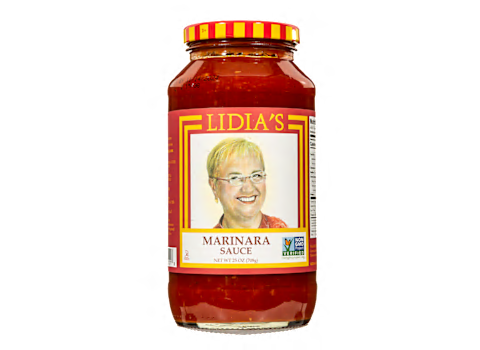
If you like a garlicky sauce, try Lidia’s Marinara. A slightly thinner sauce than many of the others we tested, this one brings robust fresh garlic taste and a kick of red pepper. Another option: Cucina Antica Garlic Marinara also serves up fresh garlic flavor.
Monte Bene Tomato Basil
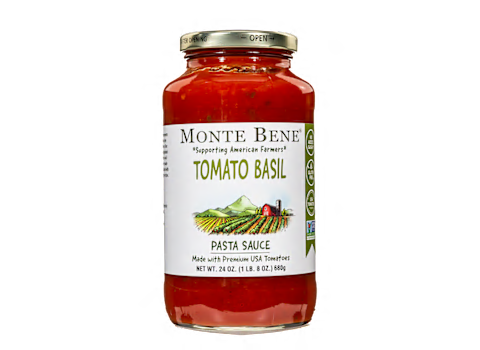
If you love basil, try Monte Bene Tomato Basil. This thick sauce is 12th overall in our ratings, but it’s one that testers called out for its fresh basil notes. Another option with big basil flavor: Michael’s of Brooklyn Fresh Tomato & Basil.
Organico Bello Delicate Recipe Organic Pasta Sauce
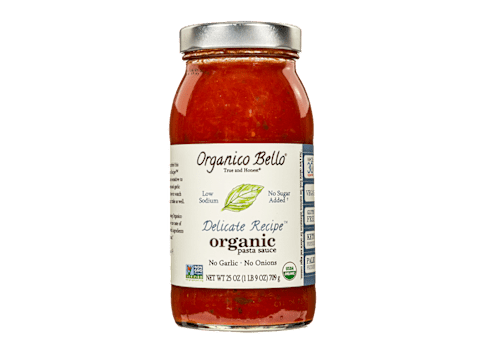
If onion and garlic are tough on your stomach, consider Organico Bello Delicate Recipe Organic Pasta Sauce. This somewhat thin, mild-flavored sauce, with a hint of fresh basil and black pepper, is a great choice for those who have difficulty digesting the onion and garlic often added to tomato sauce. Rao’s Homemade Sensitive Marinara is also garlic- and onion-free but higher in sodium, at 330 mg per 1/2 cup vs. 130 mg in the Organico Bello.
Rao's Homemade Marinara
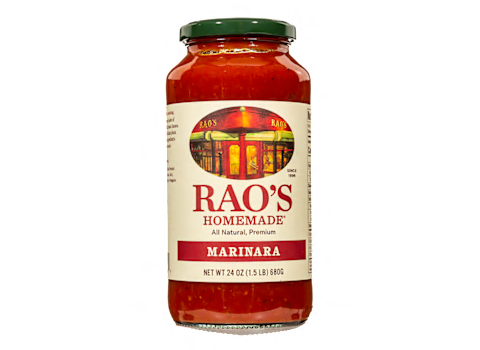
If you want a sauce that’s most like homemade, go for Rao’s Homemade Marinara. This sauce has a fresh, rich taste and a near-perfect blend of tomatoes, garlic, basil, and other flavors. The only reason it’s not in our top 10—it’s ranked 11th—is because of its sodium content (420 mg per 1/2 cup). Another option with great homemade flavor but less sodium (300 mg per 1/2 cup) is Hoboken Farms Basil Marinara.
The Silver Palate Low Sodium Marinara
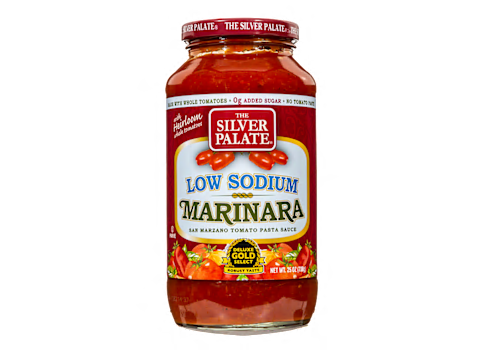
If you’re trying to cut back on sodium, try The Silver Palate Low Sodium Marinara. One of our highest-ranking sauces, this has just 140 mg of sodium per 1/2 cup and big fresh tomato taste and fresh garlic flavor. Another option is Victoria Low Sodium Marinara. It has just 120 mg of sodium per 1/2 cup, making it the lowest-sodium sauce among our recommended picks.
Editor’s Note: This article also appeared in the March 2023 issue of Consumer Reports magazine.
Consumer Reports is an independent, nonprofit organization that works side by side with consumers to create a fairer, safer, and healthier world. CR does not endorse products or services, and does not accept advertising. Copyright © 2023, Consumer Reports, Inc.
